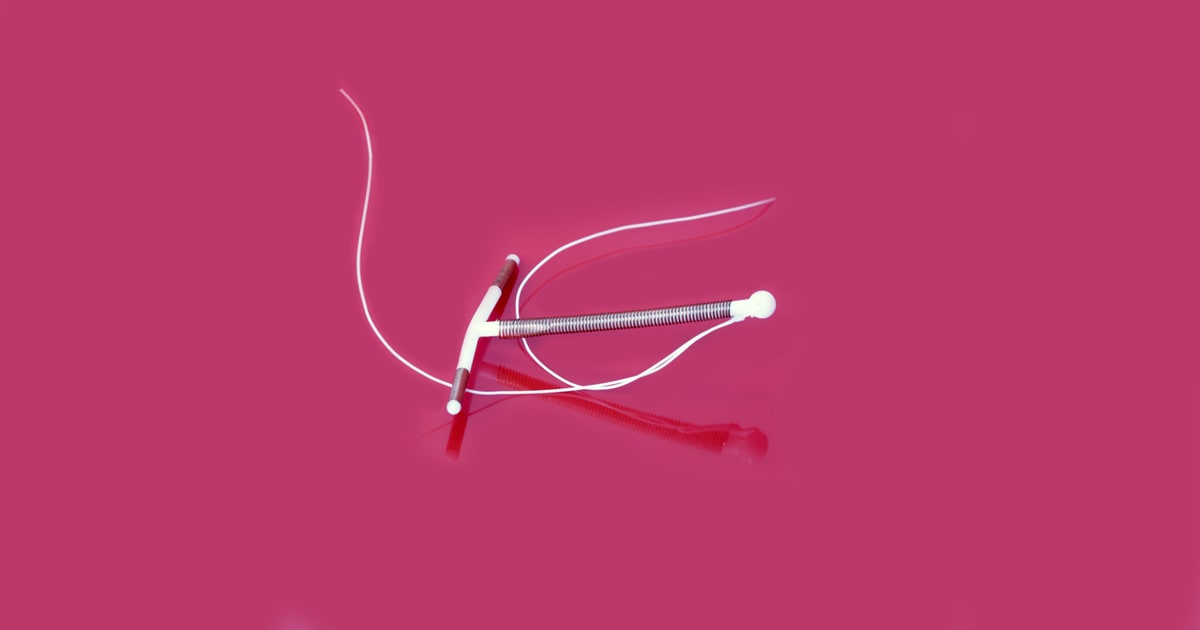IUDs 101: a guide to everything you need to know about IUD birth control

Finding the right birth control can be like the finding the Holy Grail. And the truth is, none of them are perfect— they all have benefits and they all have drawbacks. They can mess with your periods, make you feel emotional, and some of them are difficult to remember to keep using. It’s all about finding the best one for you, even if there’s no single perfect option. But if you haven’t considered long-term, reversible birth control, I would really recommend looking into it. You have probably heard some of your friends talking about coils or IUDs (intrauterine devices).
Full disclosure: I’m biased. I've had one for two years and it is the best birth control I’ve found, but it still has some problems. But it’s a birth control option that’s been gaining in popularity— especially after Trump was elected. If you’re curious, here’s what you need to know.
The Basics
Not sure how the coil works? Don’t worry, it’s a little confusing. Firstly, in the US, there are five different brands that are FDA approved. They’re called ParaGard, Mirena, Kyleena, Liletta, and Skyla. They can be copper— which are hormone free— or they can use hormones, which normally means they’re made of plastic.
They have to be put in by a doctor, nurse, or other health care provider, so no trying to DIY this shit.
And while you may get them free on insurance, they can cost up to $1,000 out of pocket. But once you get one, they should last for years— in theory up to 12 years. Although when you first put one in you may need to use other birth control until it starts working.
Coils? Copper? They can sound scary as hell, I get it— like a little screw that gets lodged in your cervix. But it’s not as bad as it sounds. A lot of women do find it a little painful to have them put in or removed, but nobody I know has had anything more than just fleeting pain.
And, when you’re done with them, that’s totally cool. You just remove them. If you want to get pregnant, you shouldn't have any problems. (Though obviously there are always risks, so talk to your doctor!)
They Can Take Some Adjusting To
Now, like most birth controls, there is an adjustment period. “You may have cramping and spotting after getting an IUD, but this almost always goes away within 3-6 months,” Planned Parenthood explains. “Hormonal IUDs eventually make periods lighter and less crampy, and you might stop getting a period at all. On the flip side, copper IUDs may make periods heavier and cramps worse.”

Personally, I felt like I was hemorrhaging tsunamis of blood for the first few periods after mine was put in. It wasn’t pretty. But it did pass after a few months.
They're Super Effective
I would say the two main draws of IUDs are 1) that once they're in, you don’t have to think about them— and 2) that they’re super effective. When they’re inserted and used correctly, they are over 99 percent effective. Not only that, certain models can actually be used as emergency birth control instead of Plan B!
BUT— and this is a big ‘but’— it doesn’t protect you against STIs. And that’s not something you can just brush under the rug. So for a lot of people, they would need to be combined with condoms for full protection.
No, It Won't Stab A Penis During Sex
Even though the idea of coils and copper may sound like a bad match for sex, rest assured that if it’s in place, it should not hurt your partner- at all. They shouldn’t even be able to feel the coil, though they may be able to feel the strings. “It’s less common, but still normal, for your partner to feel the strings when you’re getting it on,” Bedsider explains.

“For some people and their partners, the strings are more noticeable if the IUD has just been inserted and become softer and less noticeable as time goes on.” If you feel like the strings are getting in the way or are a real inconvenience, you can talk to your doctor about trimming them. Every person’s body is different, so they may just need to shave off some extra.
They Can Come Out Accidentally
Yup— and it happened to me. I noticed something uncomfortable (though not really painful) in my vagina, and when I went for a rummage, I felt like the strings were lower than they should be. I was right.

When I went to an OB-GYN, they said it had to come out immediately. Still, I got over two good years before any complications, and compared with other birth control I’ve been on, I’m all for it. Apparently coming out on its own is really rare, but it definitely happens. In my case, while hiking in Wales (maybe the least convenient place to start to feel intense vaginal discomfort). Still, if I wasn’t in a lesbian relationship with a 0 percent chance of getting knocked up, I’d probably use it again.
An IUD was the right choice for me- but that doesn’t mean it would be for you. It’s a tricky business, trying to find the right birth control. I liked the fact that I could have non-hormonal birth control that I didn’t have to think about. For you, it may be something different. But IUDs are definitely worth checking out.



